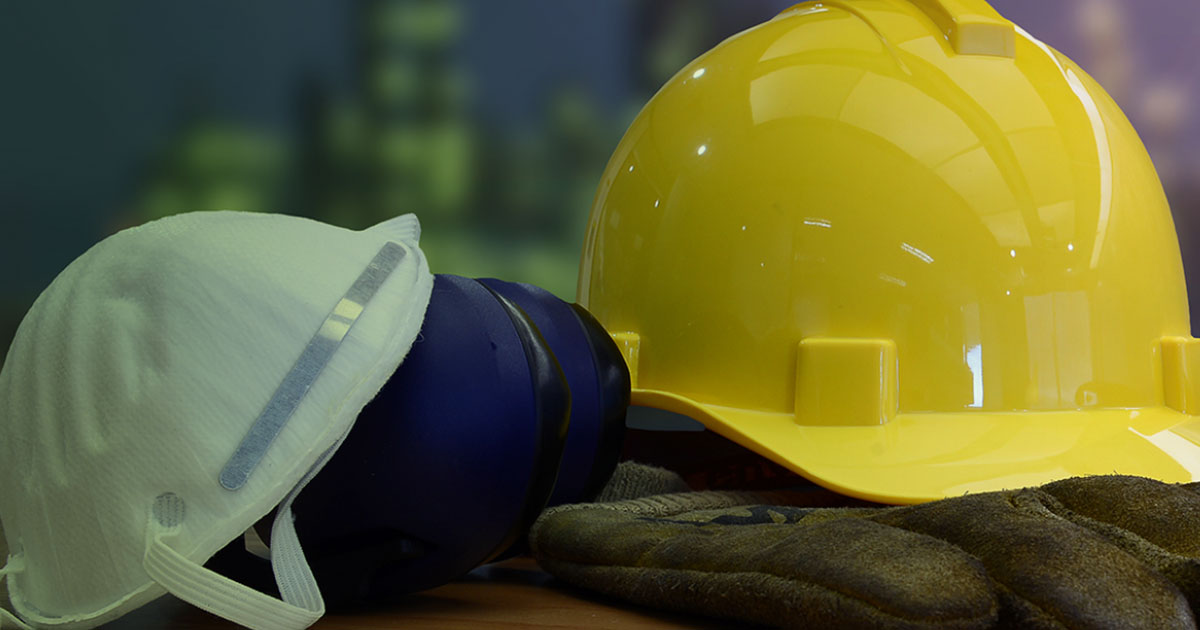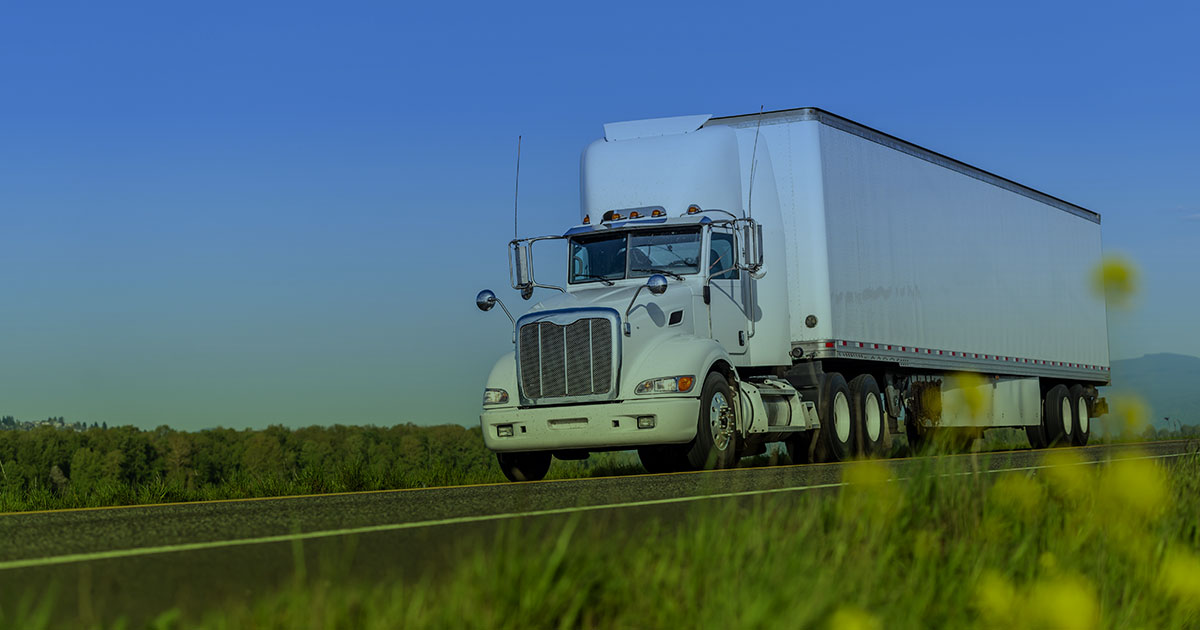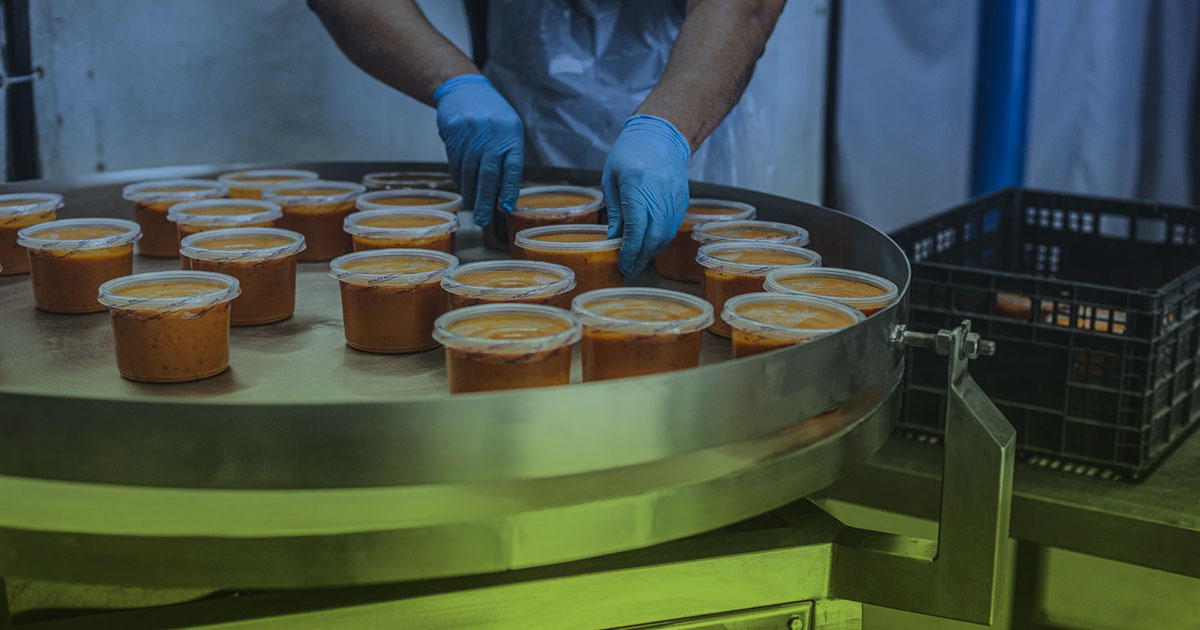These guidelines were approved by the Council of Ministers of Economic Integration (COMIECO) and the Council of Ministers of Health of Central America and the Dominican Republic (COMISCA), with the following objectives:
- establish coordinated procedures to prevent the spread of COVID-19,
- guarantee the health of cargo carriers,
- the cleaning and disinfection of means of transport and,
- the fluidity of trade.
- BIOSAFETY GUIDELINES FOR LAND FREIGHT TRANSPORT COMPANIES:
1.1. Entry and Exit of the facilities of the land cargo transport company.
- a) Disinfection of general work areas and parking of means of transport.
- b) Disinfection of means of transport before and after each service/operation.
- c) The permanent use of the mask.
- d) Establish an inspection point for taking the temperature of all workers who enter the facilities, for which there must be a person responsible for taking the temperature with a digital infrared or laser clinical thermometer to avoid contact, the responsible person must be properly protected (surgical mask, glasses and disposable gloves).
- e) Maintain the recommended distances between people (between 1.5 and 2 meters).
- f) Use the shoe wash or footbath with a disinfectant solution.
- g) Install 70% alcohol-based hand gel alcohol dispensers in the entrance areas for hand disinfection.
- h) Workers who present a temperature above 37.5°C will not be able to enter the facilities, they must be referred to the corresponding health centers established by the authorities or call the corresponding competent authority.
- i) Wash hands with soap and water and/or disinfect with alcohol or hand sanitizer gel (70% alcohol-based) when entering or leaving the facilities.
- j) It is recommended that companies reorganize their operations in such a way that if they have drivers or pilots who present greater health risks (hypertension, diabetes, among other conditions that increase their vulnerability) they can assign them other functions within the company so as not to expose them during travel and reduce the risk of contagion.
- k) Drivers or pilots must comply with all health provisions before, during and after starting a trip.
1.2. HYGIENE AND PERSONAL CARE GUIDELINES FOR FREIGHT TRANSPORTATION DRIVERS.
- Disinfect your hands every time you enter and exit the means of transportation.
- Maintain a recommended safety distance (between 1.5 and 2 meters).
- Do not shake hands or any greeting that involves contact with another person.
- Perform constant personal hygiene, as well as washing utensils and clothes daily.
- Perform constant disinfection of cell phones, keys or other personal objects.
- Disinfect footwear with a disinfectant solution.
- Do not self-medicate; in case of presenting symptoms of COVID-19 (fever, dry cough or
- difficulty breathing) go immediately to the nearest health center or
- call the corresponding competent authority (or rapid attention line of the
- country).
1.2.1. Personal Protective Equipment (PPE)
- 70% alcohol-based hand gel
- Disposable gloves
- Surgical type mask
- Protective glasses or face shield
and. disinfectant liquid soap
- powder detergent
- Gallon-size container of drinking water
- Infrared or laser digital clinical thermometer for temperature taking
1.2.2. Use of supplies.
- Every official who exercises controls at land border posts and cargo transport workers must have basic biosafety supplies (mask, glasses, alcohol disinfectant gel and disposable gloves).
- Each person is responsible for the proper use of the same and the surveillance and monitoring of the use and good sanitary practices.
- Guarantee that all personnel use the required PPE, according to their work activity, to prevent the transmission of the virus as provided for in the national legislation of the Member States.
- Personal protective equipment will be appropriate to the activities and work to be carried out.
and. Guarantee that users periodically clean and disinfect their PPE, workers are responsible for its adequate disinfection.
- Request the replacement of the PPE when it is damaged, do not share for any reason.
- Put on the PPE before entering the facilities, the disposable PPE once used will be discarded using the appropriate techniques.
- Discard the disposable PPE, in the appropriate waste containers, labeled with the precise warnings.
- Wash hands with soap and water and/or disinfect with alcohol or disinfectant gel after removing PPE.
- The use of PPE is an essential requirement for those activities in which there is frequent and close contact with people.
- Wearing disposable gloves throughout the work day can generate a false sense of security and should not, for any reason, replace hand washing with soap and water or disinfection with disinfectant gel on a regular basis.
- PREVENTION GUIDELINES TO BE CONSIDERED BY THE TRANSPORT COMPANIES IN THE FACE OF SUSPICIOUS AND SICK CASES.
- All drivers or pilots and freight transport personnel must be trained not only to know what to do when a COVID-19 infection is suspected, but also to promote prevention measures.
Therefore, it is recommended that everyone be trained in:
- Information about COVID-19, in particular about the symptoms, the incubation period and the modes of transmission of the virus.
- Epidemiological information on the affected areas.
iii. Information on disinfectants and proper hand hygiene.
- Information on how to proceed in case of symptoms.
- Informative materials.
saw. Information on fast service lines in each country.
- In case of presenting symptoms associated with COVID-19, the worker must follow the following recommendations:
- If you have symptoms such as cough, fever, sore throat and difficulty breathing; Go to the nearest health center or call the corresponding competent authority to request assistance or another mechanism determined by the competent authority.
- Follow the instructions provided by the health personnel by calling the corresponding competent authority (or the country’s hotline) or attending the health center.
iii. The decision to continue or not the trip of the pilot or driver will be made by the public health authorities in close coordination with the authorities that exercise control of the land border posts.
- The means of transport must be isolated in the previously enabled area, external and internal disinfection measures will be applied.
- In case of presenting symptoms when being at home, contact the direct boss to report them and determine not to show up to work as a preventive measure of contagion.
saw. In the event that medical disability is granted, the respective documentation must be presented, such as medication prescriptions and the recommendations to be followed.
2.1. General protocol for heads of workers :
- The work managers must have a log of the disinfected means of transport, responsible and schedule. This will serve as a means of verifying the biosecurity of the means of transport and the driver prior to departure.
- In the event that any driver or worker presents or reports symptoms in which they are suspected as likely suffering from COVID-19, the following must be done:
- Isolate the worker, provide a mask and avoid contact with other surfaces and other people; Likewise, identify the people with whom the infected personnel had contact to close the epidemiological circle.
- Maintain active lines of communication and arrange for medical care to be provided.
- Once this procedure is finished, carry out disinfection of all possible contaminated objects or surfaces that may have been in contact with the symptomatic worker, including the means of transport.
- If the worker has been in close contact with family members and people who have been in the same place with a confirmed case of COVID-19, they should not report to work and call the corresponding competent authority (or rapid assistance line in the country) to request assistance.
and. Workers suspected or sick of COVID-19, who work in activities and tasks that require direct contact with people (transport of goods), must be subjected to isolation.
- The transportation company must have replacement personnel to cover personnel absences due to COVID-19, which may previously be identified and notified in the observations field of the Single Central American Declaration (DUCA-T), at the time of its generation. .
- TRAINING.
- All freight forwarding employees must be trained not only to know what COVID-19 is and what to do when COVID-19 infection is suspected, but also to promote and implement prevention measures.
- Land freight transport companies will be responsible for training their staff or any person they hire to carry out international freight transport. In this sense, they must carry out training programs on the risks to which workers are exposed in organizations, centers and workplaces, emphasizing prevention and biological control measures.
- Land freight transport companies must have logbooks of the training given, and it is suggested that this include the following: date, training topics, training duration, list of participants, evaluations, evaluation results , corrective measures.
- Land freight transport companies will be responsible for training their staff or any person they contract to carry out international freight transport, in at least the following topics:
- Information about COVID-19, in particular about the symptoms, the incubation period and the modes of transmission of the virus.
- Epidemiological information on countries, regions and affected areas.
iii. Information on prevention measures, including information on disinfectants and proper hand hygiene.
- Information on how to proceed in case of symptoms.
- Information on the routes enabled for cargo transport.
saw. Information on the measures that the Member States are implementing to deal with COVID-19, according to the established route.
vii. Information on the disinfection of means of transport.
viii. Information on the contingency plans of the transport company, for any eventuality related to COVID-19 according to the established routes.
- Other related.
- CLEANLINESS GUIDELINES FOR FREIGHT TRANSPORT MEANS.
4.1. Hygienization of means of cargo transport
It is mandatory to wash and clean the means of transport with disinfectant before and after each route, considering the following measures:
- Surfaces must be cleaned with solutions recommended by international organizations and proven effective against COVID-19.
- Each worker who performs the cleaning must have their own utensils and they must be disinfected before and after use; avoid sharing with the rest of the workers.
4.2 . External cleaning of the means of transport and van
Prior to loading, the driver of the means of transport must wash it with soap and water on the outside (wheels, doors, bodywork in general, van) and use a disinfectant solution (Review list of recommended disinfectants)
4.3. Internal cleaning and care of the cabin
The driver must clean with a disinfectant solution, the use of gloves and a mask is essential, disinfect:
- Gear lever
- Steering wheel
- Contact controls while driving
- Seating
and. seat controls
- Tachograph or speedometer (including all the instruments that manipulate the
driver)
- Llavines
- Door latches
- Doors
4.4. OTHERS.
- Ventilate cabin regularly during movement, keep windows closed during inspections or checkpoints.
- The cabin of the means of transport must be occupied only by the driver (International Transport) and/or transport staff (transport staff is limited to national transport).
- Cash can be cleaned with the disinfectant solution.
- In the case of using credit or debit cards, carry out the disinfection process in the same way as in the case of using cash.
and. If you require the use of ATMs, disinfect your hands immediately with antibacterial gel.
- It is recommended to perform cleaning every four hours or according to the exposure of the cabin.
4.4.1. Internal Cleaning of the Van
The Driver and/or transport personnel must clean the interior of the van and observe the following:
- The means of transport is in good clean conditions and has been disinfected.
- Eliminate residues from previous shipments (food, chemical compounds, etc.)
- The closure of doors, curtains and other openings with closing mechanisms.
- It is suggested to implement a simple handwashing system in the means of transport with disinfectant soap, for the exclusive use of the driver after he has to carry out procedures or records at checkpoints or others.
4.4.2 Waste management
- Each means of transport must always carry disposable bags to discard handkerchiefs and personal protective equipment, said bag must be removed on each trip that it makes, properly closed, depositing it later in the corresponding garbage cans, pedal-opening garbage cans are recommended.
- All disposable biosafety material (PPE, bags, etc.) or possible source of contagion (handkerchiefs, cleaning items, etc.) must be kept in a different deposit from the regular waste and must be closed with a double bag with a zip closure. bag to later deposit in the places designated for the disposal of biosafety material.
- BIOSECURITY GUIDELINES FOR THE LOADING, TRANSFER AND UNLOADING OF GOODS.
- To safeguard the integrity of the people involved in the loading and unloading process at the different points, it is recommended:
- That all personnel involved in the operations of the cargo transport company have the mandatory biosafety equipment (gloves, face shield or glasses, masks and alcohol disinfectant gel).
- Epidemiological surveillance at the loading and unloading point taking temperature and symptom control. If the driver presents any symptoms or a temperature greater than 37.5°C, as long as he is not exposed to sources of heat prior to taking the temperature, he will be sent to the nearest health center.
iii. Clean the means of transport on the outside (tires, wagon, doors, curtains and cabin) and inside (cabin and wagon), prior to loading.
- Carry out the loading and unloading in a mechanized way, after the use of said machinery it must be properly cleaned and disinfected.
- Close the doors/curtain of the car. At no time will the driver or transport personnel have contact with the merchandise/product, in cases where the transport is for the transfer of cargo, for those drivers or personnel who fulfill the functions of cargo personnel (such as distributors). they must handle the load observing the biosafety guidelines.
5.1. Before loading goods
The driver(s) and transportation personnel must:
- Verify that the means of transport is in good clean conditions and that it has been disinfected if necessary.
- Check that there are no residues from previous shipments left in the means of transport.
- Verify that there are no residues of chemical cleaning or disinfection compounds.
- Check that the closure of doors and other openings with locking mechanisms.
5.2. During loading of goods
The driver or pilot and transport personnel must:
- Verify that there are no breaks or deterioration in the packaging or products.
- Verify that the product is protected from dust, humidity or other types of dirt.
- Avoid contact with the floor and walls of the cargo area or the means of transport.
- Check that the means of transport does not include objects or substances other than those authorized in the documents issued by the shipper.
and. Prevent personnel other than cargo or animals from entering the means of transport.
- Verify that the load is accommodated in such a way as to reduce its exposure to the environment and with an appropriate location according to its temperature requirements.
- Carry out the disinfection process of the contact areas every four (4) hours.
- The loading procedure must be carried out in the shortest possible time.
5.3 During the transfer of goods
The driver or pilot and transport personnel must:
- Clean all frequently touched surfaces (doors, rudder, lever, dashboard, etc.) described in the instructions regarding internal cabin cleaning. It is recommended to carry out this measure at least every 4 hours or immediately when there is possible contact with another person outside the cabin other than the driver or transport personnel.
- Wash your hands regularly with soap and water for at least 20 seconds or with hand sanitizer gel (70% alcohol-based).
- Avoid touching your face. If necessary (eg cleaning sweat) wash hands prior to contact with the face and after it.
- Cover your mouth when coughing or sneezing with your elbow or with a disposable handkerchief that will be thrown away after use.
and. The driver or transport personnel must use the mask and gloves if they have to get off the means of transport.
- Before entering the means of transport again, shoes must be disinfected with a disinfectant solution and hands cleaned with alcohol in disinfectant gel.
- In transit in the means of transport it is not necessary to wear a mask if you drive alone in it.
- Feeding must be done in your means of transport, avoiding staying in places with crowds of people and ensuring hand hygiene with soap and water or hand disinfectant gel (70% alcohol-based). Eating with gloves on should be avoided.
- A maximum of two people is allowed in the cabin for the transport of national cargo, for international trips only the driver will be allowed.
- Maintain the recommended safety distance between people when making planned stops.
5.4. During unloading of goods
The driver or pilot and transport personnel must:
- At the unloading point prior to entering the facilities, clean the outside of the means of transport.
- Have the mandatory biosafety equipment applicable to all personnel involved, with emphasis on unloading and transportation personnel.
- At the loading and unloading point, guarantee epidemiological surveillance, taking temperature measurements and controlling symptoms.
- The driver will disinfect contact areas such as: hands, shoes, keys, padlocks, doors, curtains, etc. according to the protocol described above.
and. At the time of unloading the product, the driver must keep a minimum distance of 1.5 meters from the unloading personnel, the driver may not unload any product, except for those drivers who comply with the loading and unloading functions .
- If documents are required to be signed, the driver must use their own pencil or encourage the electronic exchange of these documents.
- Only the driver may close the curtains and/or doors of the means of transport.
- Companies must establish what measures to take in the event that the cargo or merchandise is rejected.
5.5. Recommendations in route planning.
- Land freight transport companies must identify workers with vulnerabilities and risk factors together with health services and evaluate those workers with certain health conditions, which are considered to be at risk for exposure to COVID-19, and establish the corresponding measures. of isolation.
- Routes must be planned to identify and define the places where stops will be made (for example: for rest, use of toilets, dining rooms or cafeterias), which comply with biosafety requirements. Trying to make as few stops as possible.
- In the rest periods according to the scheduled stops during the tour, restrict the intake of food (preferably bring your own) and sleep inside the means of transport in the compartment designed for that purpose or in the hotel assigned by the competent authority. All material that enters the transport medium cabin must be disinfected in a 70% pure alcohol solution.
- Plan with clients the loading/unloading of goods in the most precise way to avoid the accumulation of several carriers at the same time.
and. Establish alternative forms of merchandise delivery and receipt documents (delivery notes) by electronic means to avoid personal contact.
- Avoid cash as much as possible, it is advisable to manage the payment or per diem by electronic means.
- In the driver’s cabin it is recommended to keep a properly stocked first aid kit.
- Provide a fumigation pump for the disinfection of each means of transport (tires and wagon), without limiting the corresponding washing of the means.
- If it is necessary to handle documentation, use your own pen to sign documents.
- Provide a personal hygiene kit for each carrier, water, soap and hand sanitizer gel (70% alcohol-based), disposable tissues, etc.
- The transport company must provide the necessary PPE to its personnel (disposable gloves, glasses and mask).
- The individualized use of means of transporting loads is recommended, as well as utensils used for daily work.
- Every freight transport worker must avoid manipulating the merchandise that he transports. In situations where this activity is part of your duties or in situations where such manipulation is necessary, you must comply with the required protection and prevention measures, which includes at least washing and disinfecting your hands before and after the handling and use of adequate PPE (disposable gloves, glasses and mask). Additionally, aid must be guaranteed to avoid the handling of merchandise as much as possible (forklifts and other hauling equipment).
- DISINFECTION GUIDELINES FOR BUILDINGS AND MEANS OF TRANSPORTATION.
6.1. buildings and facilities
The surfaces of the buildings and other facilities of the land border posts must be cleaned frequently, in accordance with the International Protocols approved by the WHO and the Ministries of Health.
6.2. Transport.
- External disinfection of the means of transport is recommended before entering the border post, with solutions recommended by international organizations, verifying that the pilot or driver has biosafety personal protective equipment such as: 70% alcohol-based hand gel %, gloves, face masks or masks, face shield or glasses.
- In addition, the competent authority must verify that:
- The means of transport is in good clean conditions and has been disinfected.
- That there are no residues from previous shipments (food, chemical compounds, etc.)
- The closure of doors, curtains and other openings with closing mechanisms.
- It is suggested to implement simple hand washing systems in the means of transport, for the exclusive use of the driver after he has to carry out procedures or records at checkpoints or others.



